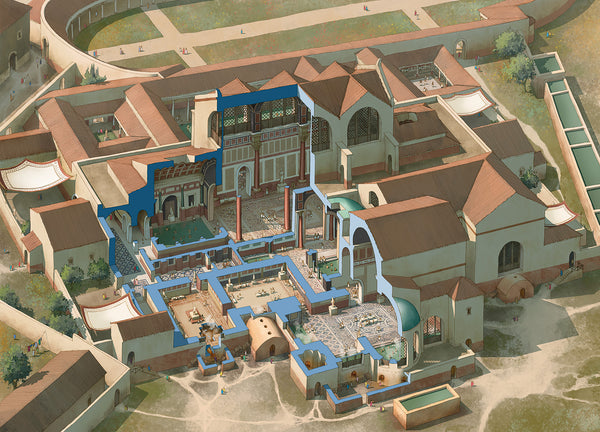GWS 2023: What do wargamers like least?
By Jon Freitag
One of the final questions in the Great Wargaming Survey in 2023 was:
What do you like least about miniatures wargaming?
Well, this is a loaded question if I ever saw one! In this case, the question was open-ended, meaning respondents could enter whatever was on their mind. Some did!
Given that the responses were free text with about a 2100 character limit, responses could be quite long and detailed. Out of the total number of survey responses, 7,278 entries had text in this field. A sample snippet of these responses is illustrated below.

Making the data manageable
As seen from the text snippet, anything goes.
How can we bring order and meaning out of these unstructured texts? For that, we turn to text analytics including cluster analysis and principal component analysis (PCA). Without going into details of the machine learning techniques, simply understand that it is a data reduction method that summarizes large quantities of text data into fewer clusters and principal components. The results are then wrangled to present (hopefully) interpretable graphics.
To begin, each text response is parsed and tokenized to create words. For example, the highlighted line, below, can be parsed into the following word tokens. That is: "people" "who" "are" "too" "pedanttic" "about" "details".

Preprocessing requires a number of text transformations (including correcting spelling errors) to get the tokens into a standard and more usable form. In addition, synonyms are used to group similar tokens. After tokenization and preprocessing, 4,918 unique tokens (words) resulted from over 36 million token combinations. The result is a large dataset with useful inferences likely obscured by such a large sample space.
To begin data reduction, records having near-zero variance are removed. After that reduction, only a manageable number of tokens are retained. Some ambiguous tokens are, likewise, removed. After the data reduction is complete, only eight tokens remain. These remaining tokens are:
- rules_lawyer
- painting
- people
- time
- cost
- competition
- find
- miniatures
Analyzing the data
Already, I reckon these eight tokens tell an interesting story. Using cluster analysis, these eight tokens are grouped to produce the dendrogram shown below:

Interesting! This immediately looks like a two-cluster solution.

The resulting clusters are "rules_lawyer" and everything else. Rules lawyers seem to find themselves high on the "Do not like"-list and separate and distinct from all other tokens in a two-cluster solution. Into the rules_lawyer category, I dumped discussions of rules, themselves, including complexity, ambiguity, arguments, etc. A four-cluster solution looks like the following image.

Now the four clusters are, (1) rules_lawyer, (2) painting, (3) people, and (4) time/cost/competition/find/miniatures. After rules lawyers, respondents tend to dislike painting followed by people(!) and then the remaining effort constraints. The "find" and "miniatures" tokens require some explanation. Into the "find" grouping were lumped discussions on finding opponents, rules, figures, places and time to play, and money to fund the hobby. Into the "miniatures" grouping were included discussions on painting, storing, assembling, price and quality.
Principal component analysis (PCA)
Turning to PCA (and without going into details), the PCA Variable plot below illustrates the loadings of each of the eight variables in 2D space. Color and length of each vector denotes its contribution to the PCA analysis.

One of the useful traits of PCA analysis when displayed as a graphic, is that inferences are easier to understand. While only two of the dimensional plots are illustrated here, both of these dimensions lend themselves to interpretation.
Looking at Dim1, the graphic suggests that the dislikes are bifurcated into two groups. These two groups are "People" related attributes and "Effort" related attributes.

Similarly, looking at Dimension 2, the graphic suggests that the dislikes are again, or also, bifurcated into two other groups. Those two groups are "Cost" and then everything else.

First, I find the results amazing in that a 36 million-cell tokenized matrix can be distilled down to meaningful inferences. Second, I find the results surprising in that rules lawyers and gamers, themselves, rise out of the murk to irritate many. I suppose that I should not be that surprised. I once had a wargaming friend (I still consider him a friend!) who confidently stated that the hobby would be great if it were not for the people!
Do these Top-8 wargaming dislikes reflect your own hobby dislikes? Does a rules lawyer stand alone at the top of your wargaming dislike ranking? If not, what do you like least about the miniature wargaming hobby?
The survey also asks a parallel question only in this question, respondents are asked what they like most about miniatures wargaming. I may look into that topic another time.
Remember, the Great Wargaming Survey 2024 starts on August 1, 2024!



2 comments
Good idea, Robert, and thank you for the comment. One potential problem with a pick list is that choices are limited and fixed with no opportunity for the results to develop organically from all of the assorted and open-ended responses.
I might perhaps have read the responses—especially “people” and “find”—differently. Rules lawyers are people, too. (Sort of.) Hard to be a hypercompetitive nit-picker with a side of gloating without being to some degree a rules lawyer, and no one complains much that his amiable cheerful loser of an opponent is a bit on the dull side. Setting aside “people,” finding fellow wargamers and figures is a search pattern problem—less and less any sort of problem in the Internet Age—while finding time, money and space are resource-allocation problems, and very different. Might be interesting to give the respondents choices rather than an open field in the 2025 survey.